Common hair loss disorders.
July 2003
in “PubMed”
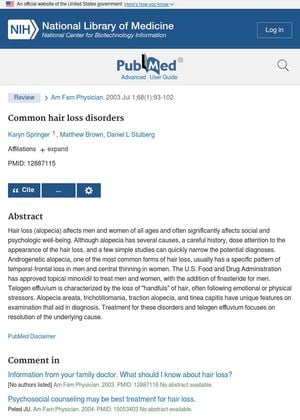
TLDR Hair loss affects both genders and can impact well-being, with treatments available for various types.
The 2003 review "Common hair loss disorders" discussed various types of alopecia and their treatments. Alopecia, which affects both men and women of all ages, can significantly impact social and psychological well-being. Androgenetic alopecia, a common form of hair loss, typically presents as temporal-frontal loss in men and central thinning in women. The U.S. Food and Drug Administration approved topical minoxidil for treatment in both genders, with the addition of finasteride for men. Telogen effluvium, characterized by the loss of "handfuls" of hair often following stressors, along with alopecia areata, trichotillomania, traction alopecia, and tinea capitis, have unique features that aid in diagnosis. Treatment for these disorders and telogen effluvium focuses on resolving the underlying cause.
View this study on pubmed.ncbi.nlm.nih.gov →
Cited in this study
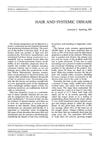
research HAIR AND SYSTEMATIC DISEASE
Hair loss can indicate underlying systemic diseases and addressing these can sometimes reverse the hair loss.

research Lack of efficacy of finasteride in postmenopausal women with androgenetic alopecia
Finasteride doesn't effectively treat hair loss in postmenopausal women.

research ANDROGENETIC ALOPECIA
Finasteride and minoxidil are effective FDA-approved treatments for androgenetic alopecia.

research The effects of finasteride on scalp skin and serum androgen levels in men with androgenetic alopecia
Finasteride effectively reduces hair loss by decreasing androgen levels.

research Finasteride in the treatment of men with androgenetic alopecia
Finasteride safely and effectively treats male pattern hair loss, but may cause reversible sexual issues and harm male fetuses.
research Retinoids and hair growth
Hair loss can signal serious health issues, not just cosmetic concerns.
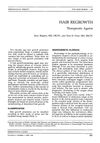
research HAIR REGROWTH
Finasteride and minoxidil are effective for hair regrowth, while treatments for alopecia areata have varying success and continuous treatment is necessary.
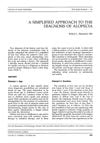
research A SIMPLIFIED APPROACH TO THE DIAGNOSIS OF ALOPECIA
A simplified method was introduced to diagnose most hair loss types by examining the patient's history and scalp, with some cases needing further tests.

research Guidelines of care for androgenetic alopecia
Treat genetic hair loss early with FDA-approved medications and consider hair transplantation.
Related

research Optimal Use of Topical Minoxidil in Management of Female Pattern Hair Loss in India: An Expert Opinion
Topical minoxidil is the primary treatment for female pattern hair loss in India.
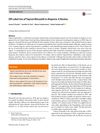
research Off-Label Use of Topical Minoxidil in Alopecia: A Review
Minoxidil helps treat eyebrow thinning, monilethrix, early hair loss, and shortens chemo-related hair loss.

research What’s New in Hair Loss
New treatments for hair loss show promise, but require more research on long-term effects and proper dosing.

research Common causes of paediatric alopecia
Hair loss in children is often caused by scalp infections, immune disorders, hair pulling, stress, and requires careful treatment due to emotional effects.

research Advance approaches in alopecia
New methods for treating hair loss are being developed.
research Finasteride in the treatment of female pattern (androgenic) alopecia: a case report and review of the literature.

research Common hair loss disorders.
Hair loss affects both genders and can impact well-being, with treatments available for various types.

research Treatments for Androgenetic Alopecia and Alopecia Areata
Minoxidil and finasteride treat hair loss; more research needed for other options.
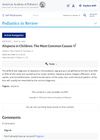
research Alopecia in Children: The Most Common Causes
Most children's hair loss is due to alopecia areata, stress-related shedding, scalp fungus, or hair-pulling.
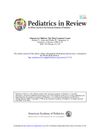
research Alopecia in Children: The Most Common Causes
The four main causes of hair loss in children are fungal infections, pulling out hair, autoimmune hair loss, and stress-related hair shedding.